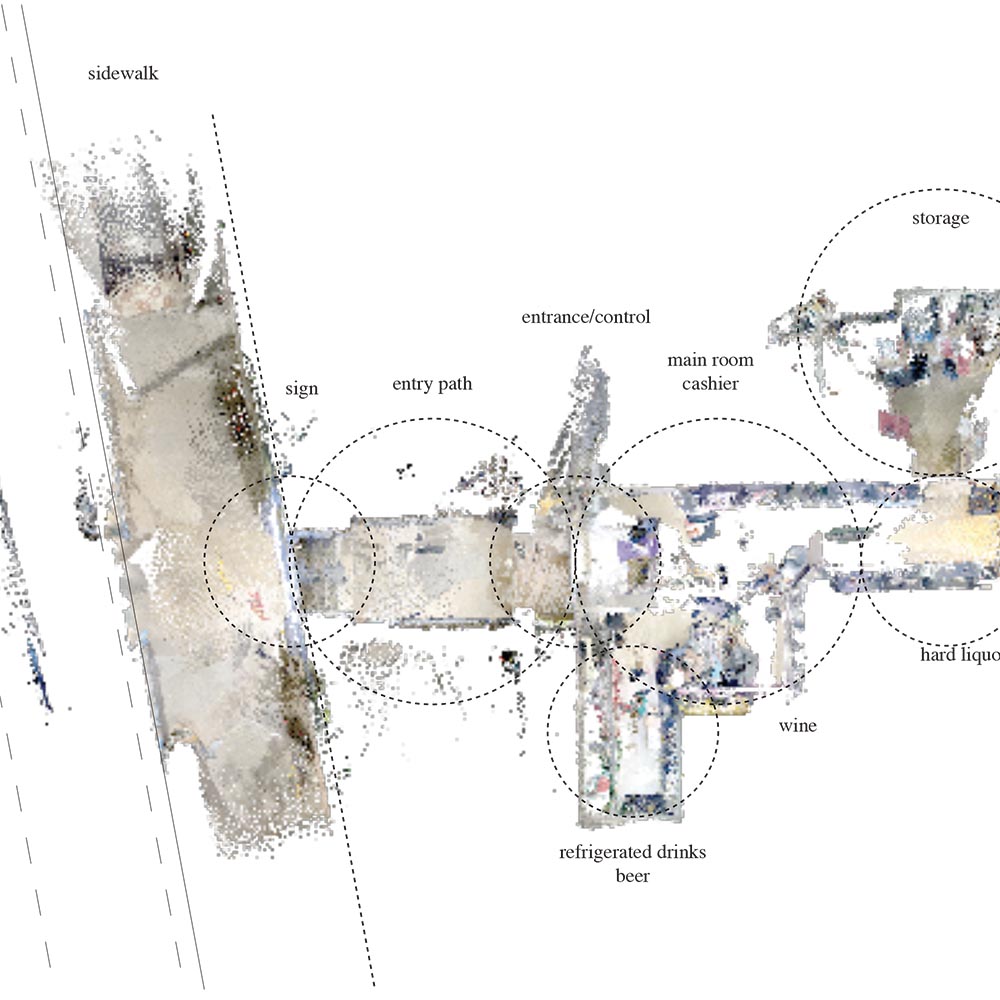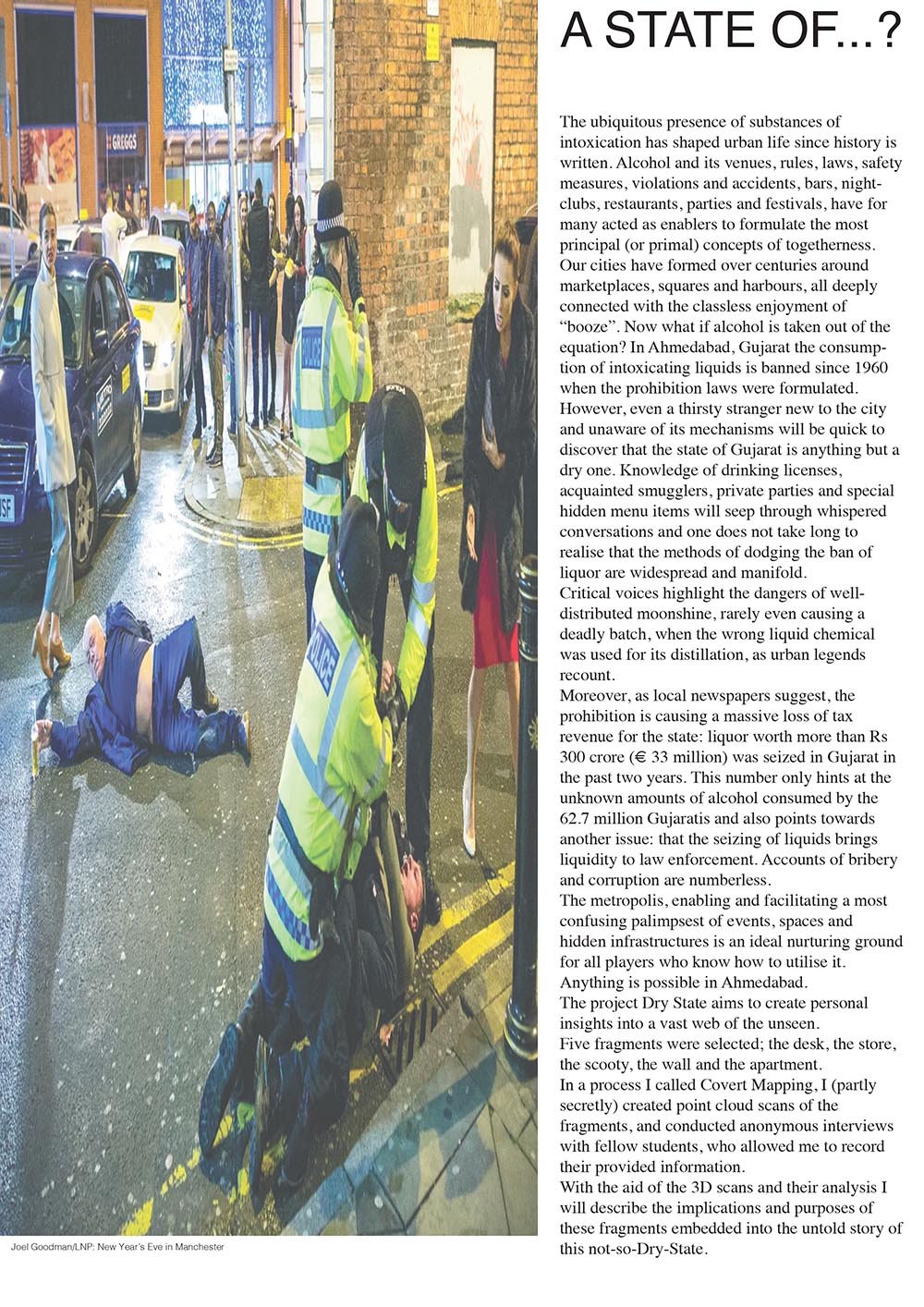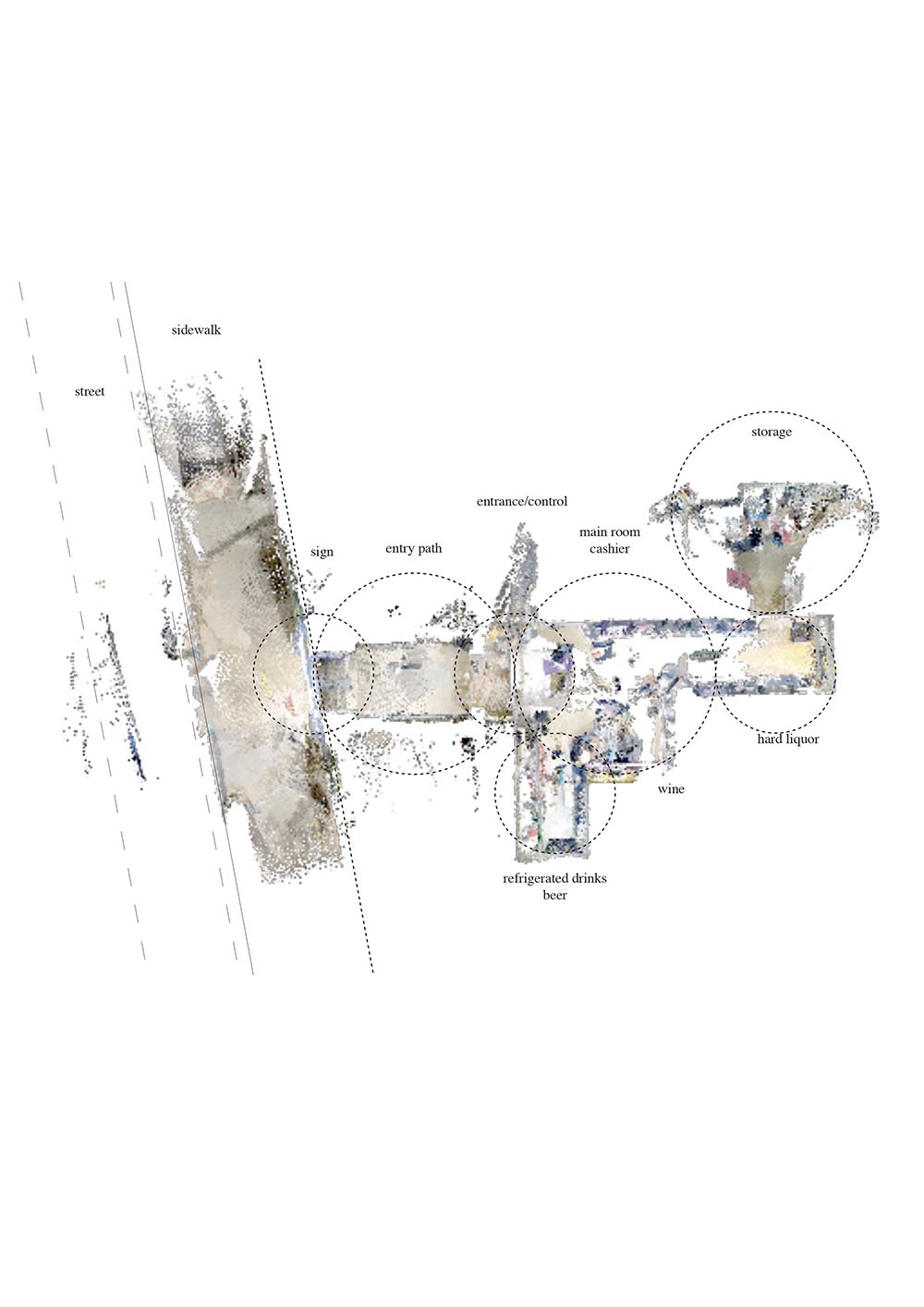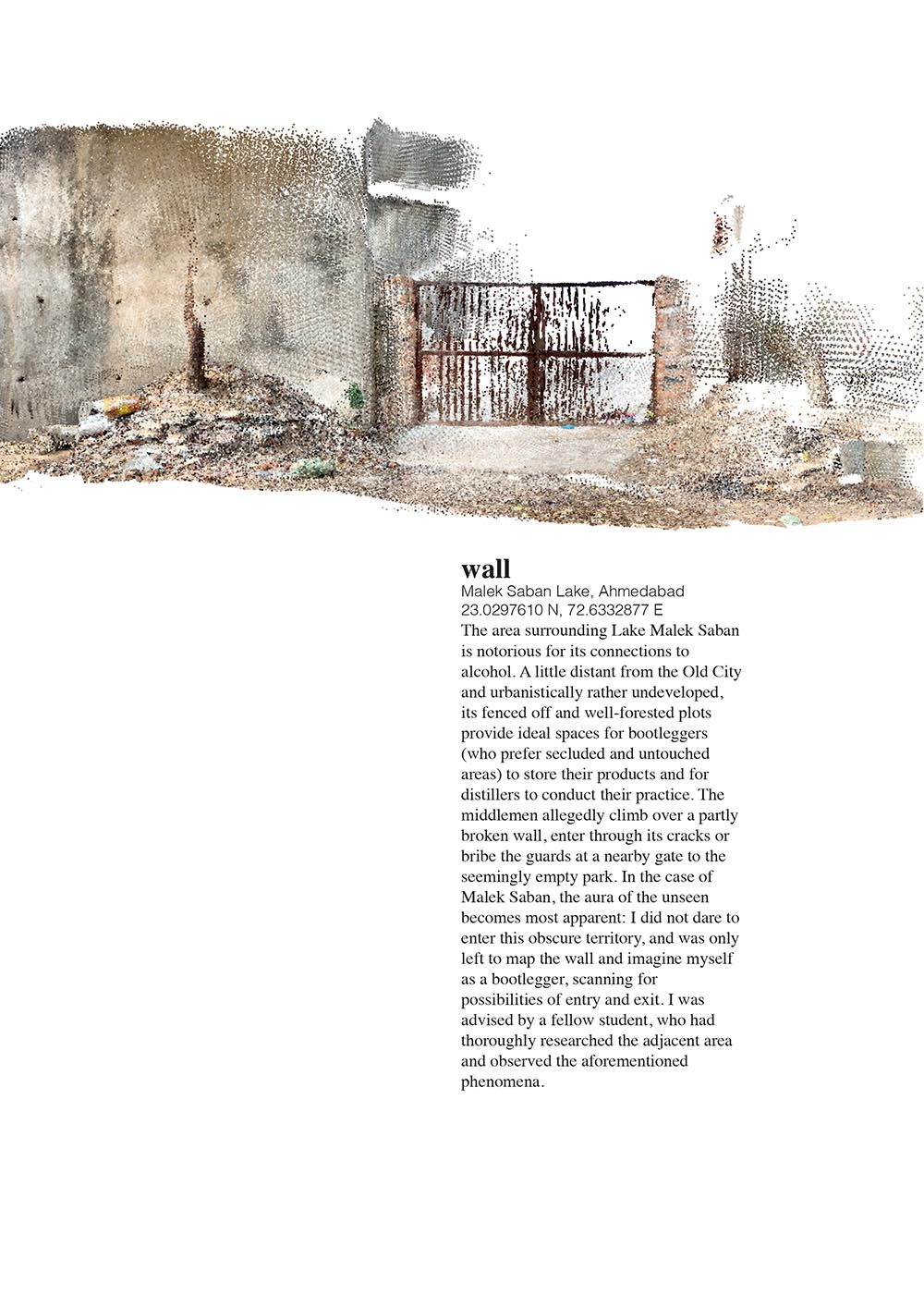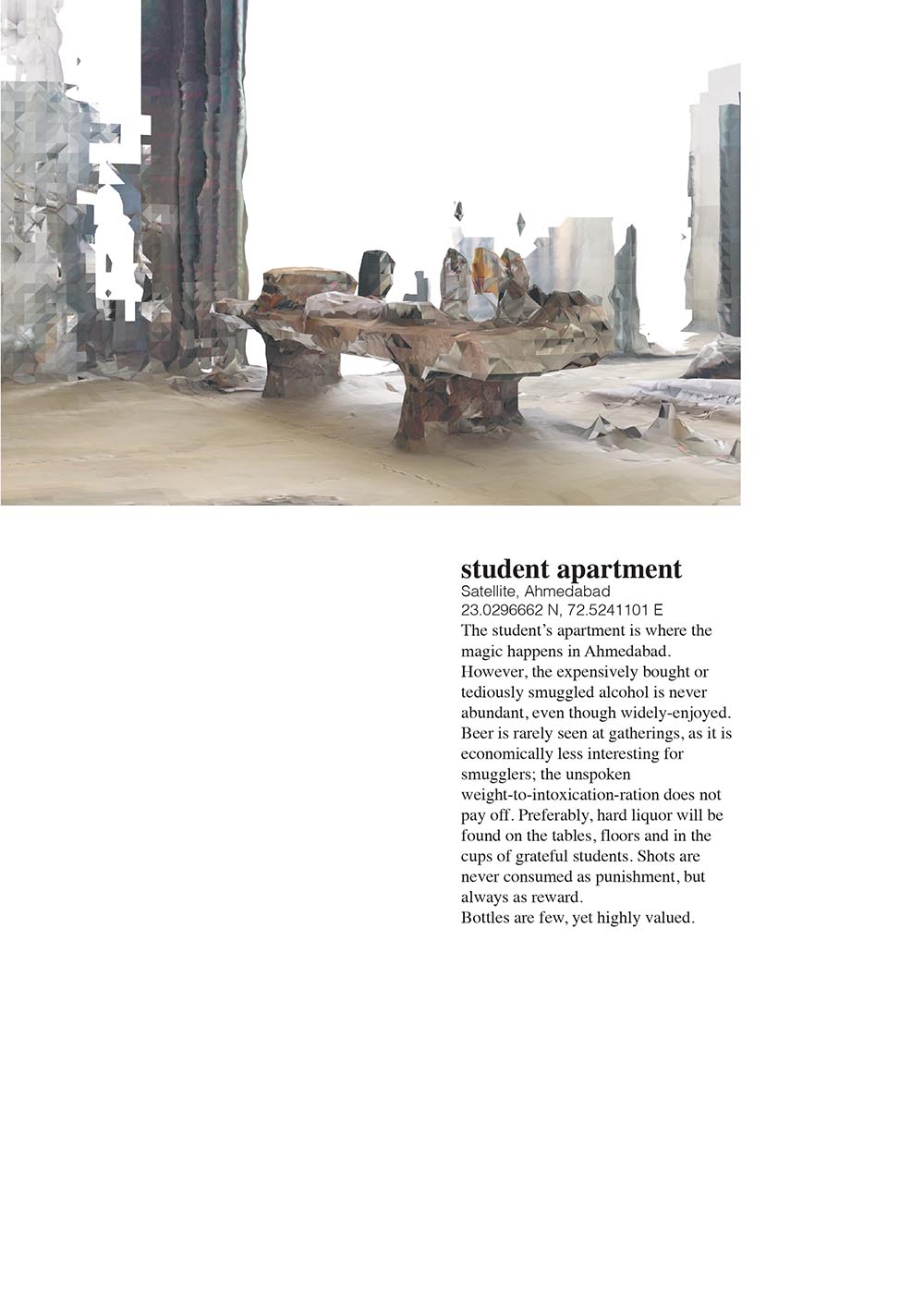The ubiquitous presence of substances of intoxication has shaped urban life since history is written. Alcohol and its venues, rules, laws, safety measures, violations and accidents, bars, night- clubs, restaurants, parties and festivals, have for many acted as enablers to formulate the most principal (or primal) concepts of togetherness. Our cities have formed over centuries around marketplaces, squares and harbours, all deeply connected with the classless enjoyment of “booze”. Now what if alcohol is taken out of the equation? In Ahmedabad, Gujarat the consumption of intoxicating liquids is banned since 1960 when the prohibition laws were formulated. However, even a thirsty stranger new to the city and unaware of its mechanisms will be quick to discover that the state of Gujarat is anything but a dry one. Knowledge of drinking licenses, acquainted smugglers, private parties and special hidden menu items will seep through whispered conversations and one does not take long to realise that the methods of dodging the ban of liquor are widespread and manifold.
Critical voices highlight the dangers of well- distributed moonshine, rarely even causing a deadly batch, when the wrong liquid chemical was used for its distillation, as urban legends recount. Moreover, as local newspapers suggest, the prohibition is causing a massive loss of tax revenue for the state: liquor worth more than Rs 300 crore (¤ 33 million) was seized in Gujarat in the past two years. This number only hints at the unknown amounts of alcohol consumed by the 62.7 million Gujaratis and also points towards another issue: that the seizing of liquids brings liquidity to law enforcement. Accounts of bribery and corruption are numberless. The metropolis, enabling and facilitating a most confusing palimpsest of events, spaces and hidden infrastructures is an ideal nurturing ground for all players who know how to utilise it. Anything is possible in Ahmedabad.
The project Dry State aims to create personal insights into a vast web of the unseen.
Five fragments were selected; the desk, the store, the scooty, the wall and the apartment.
In a process I called Covert Mapping, I (partly secretly) created point cloud scans of the fragments, and conducted anonymous interviews with fellow students, who allowed me to record their provided information. With the aid of the 3D scans and their analysis I will describe the implications and purposes of these fragments embedded into the untold story of this not-so-Dry-State.



